©2021 Reporters Post24. All Rights Reserved.
Small updates keep Apple at top of smartwatch market, even if it’s not worth upgrading from recent models
The Apple Watch gets a bigger, better screen, faster charging and a small price cut for 2021, which is enough to keep it at the top of the smartwatch market.
The Series 7 version costs from £369 ($399/A$599) and, despite being £10 cheaper than last year’s Series 6, is Apple’s most expensive smartwatch, above the Watch SE costing from £249 ($279/A$429). It requires an iPhone 6S or newer and does not work with Android.
The Series 7 comes in 41 or 45mm case sizes, both 1mm taller than their predecessors and thinner bezels mean the screens are 20% larger.
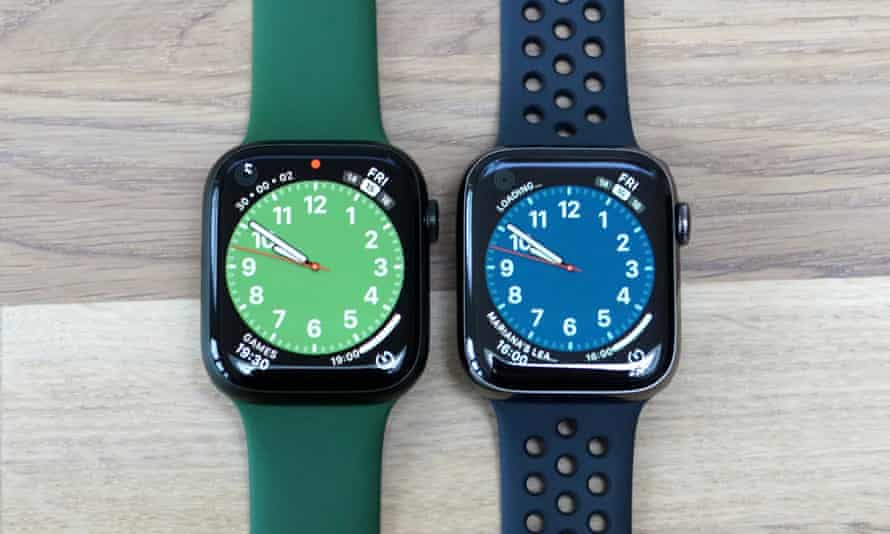
Every extra pixel on a device as small as a smartwatch counts. On-screen buttons are bigger and easier to tap. More text fits on the display or fonts can be made larger and easier to read. New watch faces can fit two full-size information widgets at once, and there’s a new full qwerty keyboard for typing out messages that is exclusive to the Series 7.
None of these additions are revolutionary, but they are good refinements to the current Apple Watch formula.
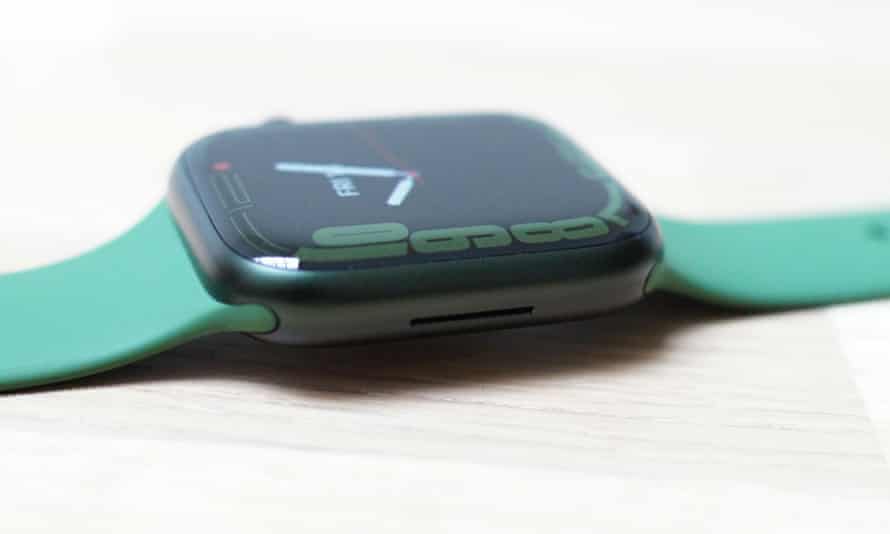
Specifications
- Case size: 41 or 45mm
- Case thickness: 10.7mm
- Weight: 32/38.8g, 42.3/51.5g or 37/45.1g depending on material and size
- Processor: S7
- RAM: 1GB
- Storage: 32GB
- Operating system: WatchOS 8
- Water resistance: 50 metres (5ATM)
- Sensors: gyro, HR, ECG, blood oxygen, microphone, speaker, NFC, GNSS, compass, altimeter
- Connectivity: Bluetooth 5, wifi n, NFC, ultra wideband, optional 4G/eSIM
Slick performance, 36-hour battery life
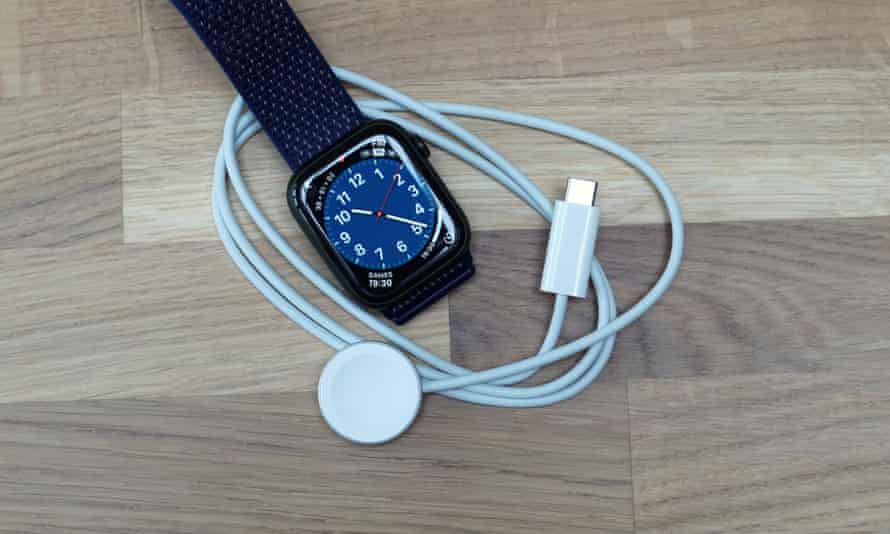
The new S7 chip matches the performance of last year’s S6, making the Series 7 the fastest, smoothest and slickest smartwatch you can buy. Battery life is the same, too, lasting about 36 hours between charges with sleep tracking overnight and the screen on all of the time during the day. Tracking a 35-minute run consumed 7% of the battery, so it should manage a marathon or two.
Sustainability
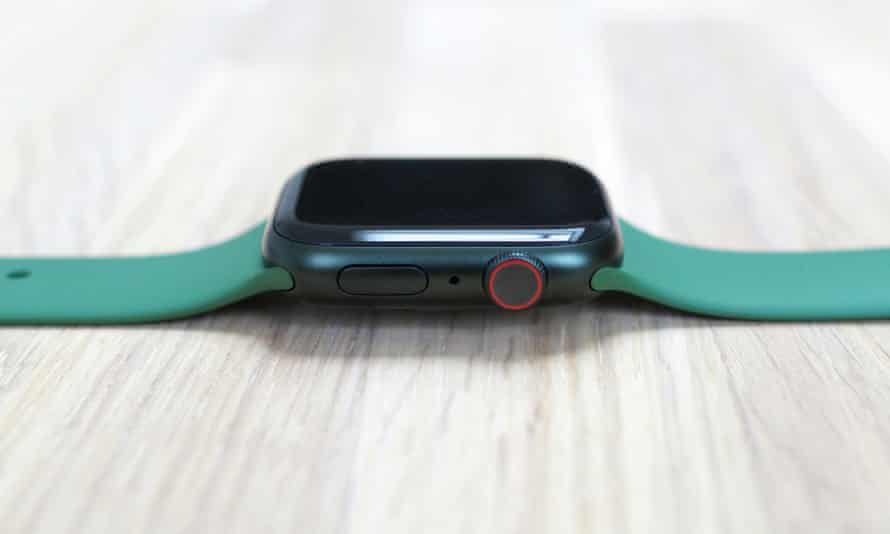
Apple does not provide an expected lifespan for the battery in the Series 7. Batteries in similar devices typically last at least 500 full charge cycles while maintaining at least 80% of their original capacity. The battery can be replaced for £82.44. Repairs cost between £286.44 and £462.44 depending on the model, while repair specialists iFixit awarded the Series 7 a repairability score of 6 out of 10.
The Series 7 includes 100% recycled aluminium, 99% recycled tungsten and rare earth elements, and 100% recycled tin in the solder of its main chips. Apple offers trade-in and free recycling for devices, and breaks down the watch’s environmental impact in its report.
WatchOS 8 and health tracking

The Series 7 runs the same watchOS 8 software as every Apple Watch from 2015’s Series 3. It adds a portrait photo watch face, the “focus” notification handlings from iOS 15 and the ability to set more than one timer at once.
It also adds better text entry including the ability to use combinations of dictation, scribble, emojis and a full qwerty keyboard. There is also a redesigned meditation app that melds breathing coaching with mindfulness.
WatchOS 8 is the best supported and most capable smartwatch operating system available, despite recent advances by Google with WearOS. You can expect at least five years or longer of software support, including feature and security updates, which is far longer than smartwatch rivals.

The Series 7 has the same comprehensive health-tracking features as the Series 6, including the ability to take ECG for heart rhythm, blood oxygen level monitoring and fitness tracking across a large range of workout types. Only dedicated multisport watches track more metrics across running, cycling and adventure sports.
Observations
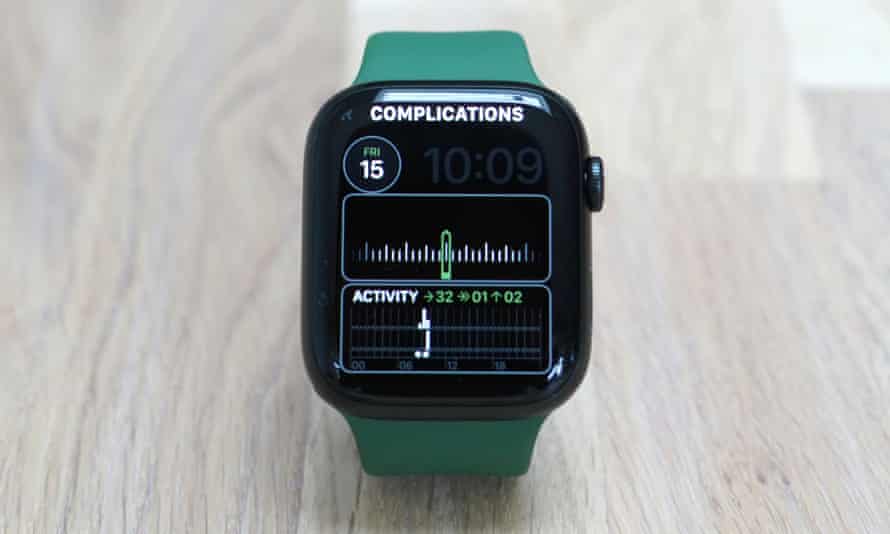
- Sleep tracking now includes respiration rate, but not sleep cycles like some competitors.
- The Apple Watch can be used to unlock an iPhone with Face ID when wearing a mask, which is extremely convenient.
- Bands made for older Apple Watch models fit the Series 7.
Price
The Apple Watch Series 7 comes in two sizes, three different materials and models with the option of 4G that requires an eSIM and compatible phone plan add-on.
The aluminium or Nike versions in 41mm size cost £369 ($399/A$599) or £399 ($429/A$649). 4G models cost an extra £100 ($100/A$150). Stainless steel and titanium models cost more.
For comparison, the Apple Watch SE costs £249, the Samsung Galaxy Watch 4 costs £249, the Fitbit Sense costs £279.99 and the Garmin Venu 2 costs £299.
Verdict
There wasn’t a lot wrong with last year’s Series 6, so a bigger, better screen and faster charging add to an already winning experience.
It is still expensive, even if it is £10 cheaper than last year, and the lack of third-party watch faces means you’re stuck using only those that are built in. Sleep tracking could be better, too, but the rest of the health features are top-class.
It is not worth upgrading from a recent Apple Watch. But for those with worn-out models or looking for their first smartwatch for the iPhone, the Apple Watch Series 7 is the best you can buy.
Pros: excellent haptic vibrations, larger and better always-on screen, ECG, top health tracking, great activity tracking, 50m water resistance, solid battery, long software support, recycled aluminium.
Cons: expensive, only works with an iPhone, sleep tracking still not great, blood oxygen data not that useful, no third-party watch faces, not a giant upgrade.
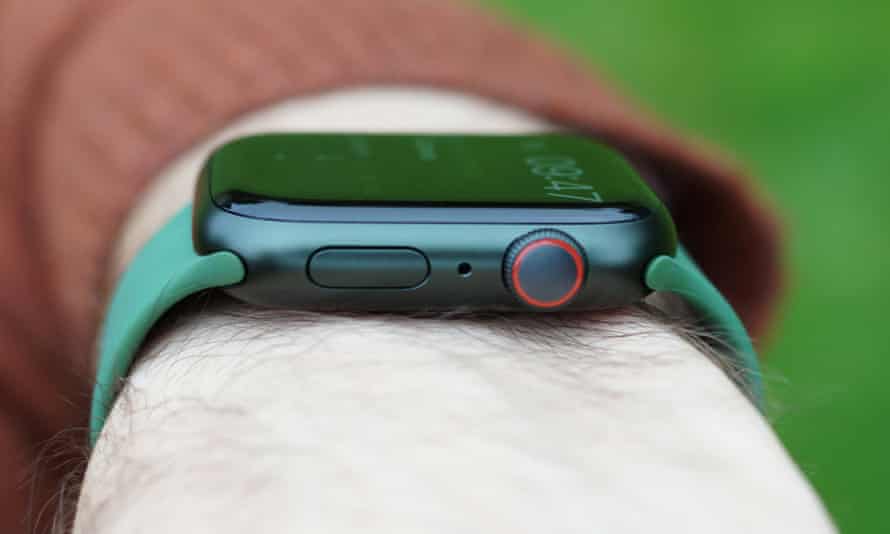
… we have a small favour to ask. Millions are turning to the Guardian for open, independent, quality news every day, and readers in 180 countries around the world now support us financially.
We believe everyone deserves access to information that’s grounded in science and truth, and analysis rooted in authority and integrity. That’s why we made a different choice: to keep our reporting open for all readers, regardless of where they live or what they can afford to pay. This means more people can be better informed, united, and inspired to take meaningful action.
In these perilous times, a truth-seeking global news organisation like the Guardian is essential. We have no shareholders or billionaire owner, meaning our journalism is free from commercial and political influence – this makes us different. When it’s never been more important, our independence allows us to fearlessly investigate, challenge and expose those in power. Support the Guardian from as little as $1 – it only takes a minute. If you can, please consider supporting us with a regular amount each month. Thank you.


